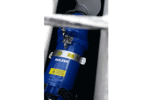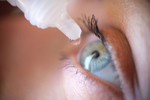Medical Photonics Devices and Solutions
PHOTONICS MEDICAL APPLICATION NOTES
Over the past few years a growing number of companies have come to rely on Photon Counting for applications that range from particle sizing, atmospheric studies and advanced forms of biomedical research. By Excelitas Technologies
Accurate, rapid, and non-invasive detection and diagnosis of malignant disease in tissues is an important goal of biomedical research. Optical methods, such as diffuse reflectance, fluorescence spectroscopy, and Raman spectroscopy, have all been investigated as ways to attain this goal. Diffuse reflectance utilizes the absorption and scattering properties of tissues, particularly from cell nuclei and stroma.
Fluorescence is one of the most beautiful phenomena in nature, as fascinating to us today as it was for early scientists. It occurs throughout nature: gemstones, minerals, chlorophyll and even crude oil residues fluoresce. And though fluorescence began as a field of scientific study, it has evolved and matured into a technique that now enables entire fields of cutting-edge science and medicine.
WHITE PAPERS AND CASE STUDIES
-
Biotech Engineered To Meet Emergency Response Timelines
Rapid antibody engineering and cell line development are vital in bringing therapies to clinics efficiently. Now, innovative technologies and communicative systems are making unrivaled speeds possible.
-
Sweet Success: How Hydrogen Peroxide Transformed Odor Control In Massive Sugar Facility Ponds
A sugar processing facility was experiencing hydrogen sulfide (H2S) odor issues in their process water stabilization ponds due to anaerobic conditions.
-
Commercializing Rare Disease Treatment With Near Real-Time Alerts
How did Quest help a leading pharmaceutical company overcome the data latency challenges associated with traditional EHR when recruiting eligible patients for a rare blood disorder drug?
-
A Taste Masked And Easily Swallowed Malaria Drug For Elderly Patients
Dysphagia impacts treatment compliance and disproportionately affects the elderly. Learn how microencapsulation enabled formulation of a water-soluble powder drives patient adherence.
-
Accelerate Your Oncology Breakthroughs
Finding the right partnership can help your oncology clinical trials overcome trial complexities through strategic planning, a deep scientific understanding, and operational excellence.
-
SCADA System And Water Leakage Management Software For MCWD's Water Distribution Network Helps Reduce Non-Revenue Water And Improve Stability Of Water Supply
Metropolitan Cebu is the country’s second largest urban area, and has been experiencing significant economic and population growth in recent years.
-
Sulzer Mixers Designed To Tackle Digested Sludge
Discover how a wastewater treatment plant solved its mixing problem that was caused by the high sludge content.
-
Delivering Apheresis Treatment From The USA To The UK Within 24 Hours
The goal was to perform next-day collection of temperature-sensitive tumor material for an urgent patient treatment. A flexible mitigation strategy was essential to manage short turnaround.
-
Understanding Real-World Patient Characterization And Safety Outcomes Of DEXTENZA
In this study, we can derive confirmation of DEXTENZA’s favorable safety profile across a broader surgical spectrum.
-
Proactive WWTP Design And Innovation Improves Health Of Chesapeake Bay Watershed
Read about the $568 million, decade-long upgrade of a Water Pollution Control Plant that would expand the plant’s capacity from 30 mgd to 40 mgd while also reducing nitrogen and phosphorous to the limit of technology.
-
Defining And Implementing Global Data Standards And Governance
Learn how ProPharma's expertise in data standards and governance is transforming research and development for a global biopharma leader.
-
Streamline Recruitment With Confidence
Transform your clinical trial recruitment with a service that delivers faster, more cost-effective enrollment, particularly for hard-to-reach populations.
NEWS
-
QuasarMD Unveils Advanced Full-Body Light Therapy Mat To Support Aging Wellness7/29/2025
QuasarMD LLC, a leader in light-based wellness technologies, announces the launch of its Full-Body Light Therapy Mat, a clinically validated, non-invasive solution designed to address the evolving wellness needs of aging adults.
-
Be Part of Photonics Future: CIOE 2025 Visitor Registration Live Now!4/9/2025
The 26th China International Optoelectronic Exposition (CIOE 2025) is set to take place from September 10–12, 2025, at the Shenzhen World Exhibition & Convention Center, spanning 240,000 square meters of exhibition space.
-
DigiKey To Highlight Power Solutions From Leading Suppliers At APEC 20242/20/2024
DigiKey, a leading global commerce distributor offering the largest selection of technical components and automation products in stock for immediate shipment, will be highlighting the latest in power solutions from leading suppliers at APEC 2024, Feb. 25-29 in Long Beach, Calif.
-
Consulta Remedios Selects Kevel's Retail Media Cloud To Power Its Next-Generation Advertising Platform5/2/2025
Kevel, the leading provider of API-based retail media ad serving technology, today announced that Consulta Remédios, Brazil's largest medicine price comparison platform, has selected Kevel's Retail Media Cloud to power the development and enhancement of its in-house retail media network.
-
Topsoe Announces Plans For New State-Of-The-Art Us Electrolyzer Factory For Clean Hydrogen4/19/2024
Topsoe, a global leader in carbon emission reduction technologies, announced plans to build a cutting-edge factory in Chesterfield, Virginia. The factory will manufacture advanced, energy efficient Solid Oxide Electrolyzer Cells (SOEC) that are essential to the efficient production of clean hydrogen and derivatives like eAmmonia and eMethanol.
-
Silo Pharma Expands Intellectual Property Portfolio With Patent Application For Exclusively Licensed Alzheimer's Drug4/28/2025
Silo Pharma, Inc. (Nasdaq: SILO) (“Silo” or the “Company”), a developmental stage biopharmaceutical company focused on novel therapeutics and drug delivery systems, today announced the filing of a patent application with the U.S. Patent and Trademark Office (USPTO) focused on the neurology drug SPC-14, an intranasal compound for the treatment of Alzheimer’s disease (AD) exclusively licensed to Silo Pharma from Columbia University.
-
Runaya And Eckart Partner To Build A Sustainable Aluminium Powder Facility In India12/18/2024
The global manufacturer in the effect pigment market, ECKART (headquartered in Germany) has entered into a joint venture agreement with Runaya (headquartered in India) a pioneer in sustainable manufacturing having alliances with global technology leaders across portfolio of high technology products.
















